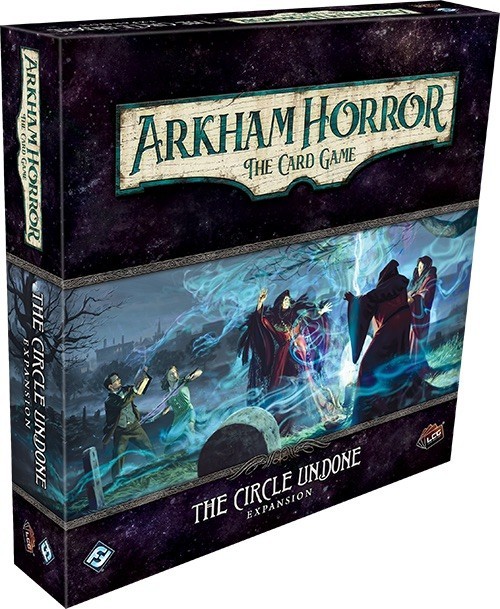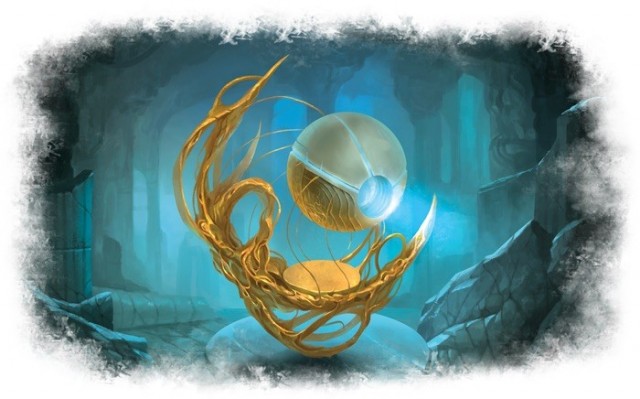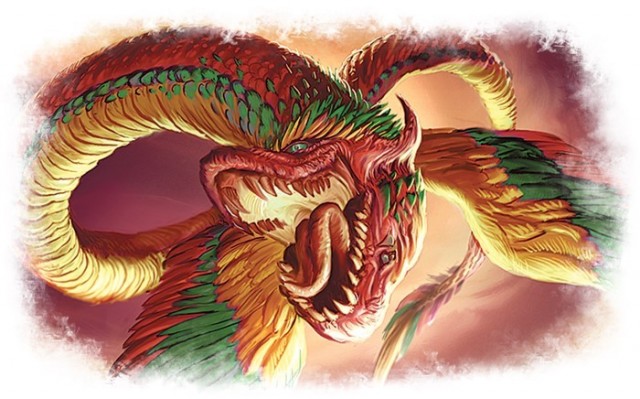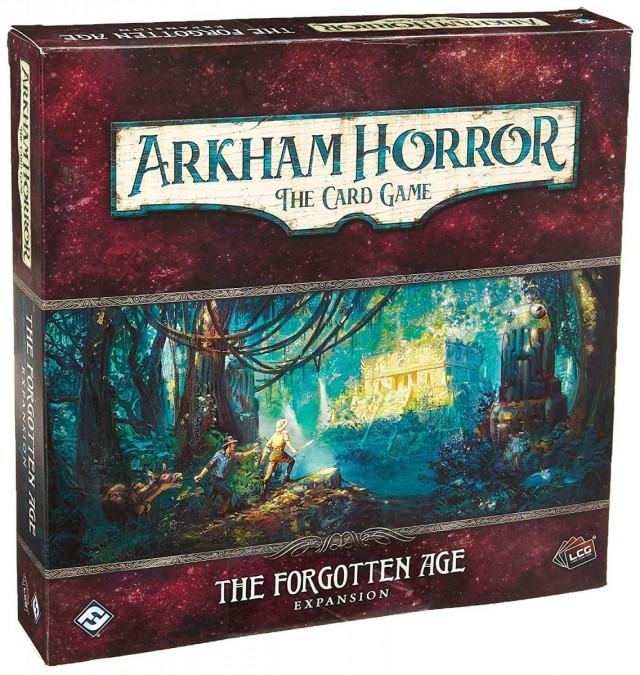This article will look at an individual scenario of Arkham Horror: The Card Game. These will be my impressions after playing through the scenario and will be focusing on the mechanics and how those reinforce the story elements of a given scenario. These articles will contain extensive spoilers and assume a familiarity with the terms and mechanics of the game. Please do not read on if you have not played the scenario in the title yet.
In addition this piece will contain references to all of the Path to Carcosa campaign and may spoil some elements from previous scenarios.
Songs that the Hyades shall sing,
Where flap the tatters of the King,
Must die unheard in
Dim Carcosa.
The final steps have been taken. You’ve made it to the great city of Carcosa, it’s spires tower above you, the suns of this lost world shine high in the heaven. His name echoes in your mind, you want to say it, to extol his virtues. The King in Yellow has echoed through your adventures, the Man in the Pallid Mask has dogged your every move. Now, at the last, your final decisions will mean the difference between supplication or freedom.
Embrace your fears or deny the truth
We have walked the path from the chapel in Mont Saint-Michael, following the road above or below ending up on the Shores of Hali or the Dark Spires. The locations in this scenario are unlike any others we have previously encountered. With no unrevealed side but information on the back we currently have no clear route as to how we get to the story on the back. In addition the investigators cannot be defeated by Horror, meaning we can take more than our Sanity. Sounds good right?


We pick our way through the streets of this mysterious city, a grand palace sitting in the middle towering over the rest of the buildings. Impossible architecture is everywhere and the sun hangs bright in the sky.


It is a mere 7 turns until the first Agenda flips but we only need a small number of clues to advance the Act. Hastur cannot be defeated and we are also forced to flip the Agenda if there is enough damage on him. For now though this particular entity remains elusive, having been set aside during setup.
We turn the Act. We are in the theatre aren’t we? Watching the play on stage. A shadow flits in the corner of our eye and we see the Man in the Pallid mask. “Do you remember now?” he shouts and we follow him to the Palace in the centre of Carcosa. We are in Carcosa aren’t we? Don’t you remember?

Don’t you remember?
The first time I came across Act 1, I just loved it. The designers had been building to this point across the whole of the campaign, making us doubt the truth of our situation. We are just watching a play. We are just in Carcosa. Our reality is splitting. Our minds are beginning to break. Similarly the Agenda flip has us back in the confines of the Asylum and this idea is repeated throughout the Act and Agenda deck having us constantly question what the investigators are seeing.
The next Act card has three flavours depending on which path we have chosen throughout the campaign. Each one does not allow us to discover clues anymore, and only finally dealing with The Man in the Pallid Mask, brought into play by the advancement of Act 1 will advance us through our tale.



Version 1: In this version the Man in the Pallid Mask cannot be defeated.
Version 2: The Man in the Pallid Mask cannot be defeated other than through his Action ability
Version 3: We must defeat the Man in the Pallid Mask through damage only (Lord of Carcosa)
Let’s look back at the setup and what leads us to each version of this act and what that means for the final confrontation with Hastur.
Version 1 is from us not going down either the path of Doubt or Conviction, we have not committed either way and remain unimpeded by choice. Here the true horror of our indecision is revealed as we turn the Act over and the lead Investigator puts on the Mask! Time and reality is warping. Were we pursuing ourselves all along?


Hastur (The Tattered King) is spawned by this act and he is horrific to us, our ignorance causing his horror to resonate more than either of the other versions, causing a massive four sanity damage and one physical damage if that hit exceeds our sanity. On top of this he turns a bunch of tokens into autofails and will pursue us as a hunter across Carcosa.
Version 2 comes from us doubting the world around us, we hang onto our reality, closing our eyes to the horrors around us and explaining them away as best we can. We see Hastur in his form from the play as The King in Yellow, hanging onto the thought that we are still in the theatre, that all this is just a figment of our imagination. This version of Hastur cannot be damaged except from story cards, the truth being revealed to us slowly helps us deal with the God we are now faced with. Although his sanity damage is less he attacks everyone at every location, again causing physical damage if your sanity limit is exceeded. We can slow this version down, but a will test of 4 is not always easy to pull off.


Version 3 is the path of Conviction. We know what Hastur is, we have read the signs and seen the truth, even if that knowledge has risked breaking our minds. Hastur as the Lord of Carcosa hunts us, is the hardest to kill and has a combination of the first two, being not as bad for sanity damage, like version 2, but changing the tokens, like version 1.


Hastur has appeared in one of his forms and final act lets us peer into the story. Every time we clear a location we flip it over and read the story on the back. Some of these will allow us to damage Hastur, others will see us revisiting the past, or experiencing the present depending on how your mind perceives these events.
Once a location has been read it is often replace with another copy, giving us the option to run through one location to hurt Hastur before moving to the next. When Hastur is finally defeated we can advance and go to the resolution, each one reflecting our choices down the paths of Doubt or Conviction.
As we rush through the Act, desperately trying to retain our sanity, the Agenda ticks along. We have already visited the asylum from The Unspeakable Oath on the back of Agenda 1 and Agenda 2 sees us being invited into the Party from The Last King only this time the Beast of Aldebaran is hosting. There is nothing terribly surprising in the Act deck, each one makes our job a little harder and we can’t defeat Hastur until at least Act 2.
Scenario Card

Honestly the scenario card for this one is a little disappointing. In previous chapters of this campaign we can see how the previous scenario has affected the next, but when it comes to Dim Carcosa there is little in the way of narrative crossover.
The skulls are going to hit us harder when we run down the sanity clock and the cultists are coming along for the ride regardless of what happened in Black Stars Rise. The only effect from Black Stars Rise is whether we are dealing with Tablets or Elder Things. These are affected by whether we took the path below or above but there is little narrative link to this scenario.
Strange Encounters
The set for this scenario has one of my favourite cards out of the entire campaign. Three Hidden Perils are in the set and they are what I had been wanting right from the start, forcing you to attack other investigators to get rid of the Murderous version, or causing a Skill test to fail (the resource loss one isn’t that interesting). I would love to see them play more with this kind of hidden traitor mechanic in future expansions.
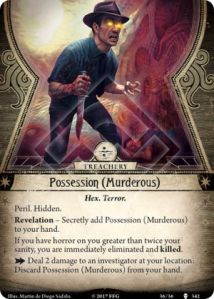
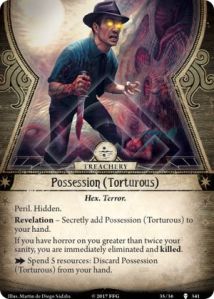

The Final Act gives us a bit of an Ancient Evils vibe. Realm of Madness really hits us as we build up the Horror on us. Although we cannot be defeated by Horror, we can still be crippled by it! Dismal Curse is in a similar vein, causing us physical damage if we have taken too much sanity damage and is one of the most likely thing to occur in the deck having 3 copies. The couple of monsters in the deck are focused on Act 3, attacking and moving when location cards are flipped.
The rest of the deck goes back to the past with Striking Fear and of course the Agents of Hastur set. These core set cultist cards are a recurring theme over the course of the expansions so far and it is good to see them coming back as we may not have actually used them before. The Yellow Sign in particular is going to cause us problems.
Cards from previous scenarios make an appearance: Beast of Aldebaran, the Fanatics and of course the Delusions set. The Fanatics can be occasionally useful as they clear a location of the final clue. Descent into madness from the Delusions set is going to go off pretty much every time it triggers, slowing down our progress. It’s a great set, reinforcing that your mind cannot cope with what is going on around it.
The Final Curtain
The play is over, your search is at and end, Carcosa has melded with our world our Hastur lies defeated in the spires of the yellow city. The outcome of your story will depend very much on which version of Hastur you fought and therefore how you conducted yourself across the whole of the campaign.
Resolution 1 leads us to the Mask and sees us finally ridding ourselves of it atop the chapel from Black Stars Rise, but were we pursuing ourselves? Resolution 2, the path of Doubt, sees us starting awake in the theatre, relieved to find it was all just our imagination, a dream brought on by the play. Well it was, wasn’t it? Resolution 3, the path of Conviction, leaves us back on the Island exhausted from our fight in Carcosa, but relieved to be back on solid ground. We have seen and learnt much.
Resolution 4 and 5 see the investigators losing, the former if our Conviction is greater than or equal to Doubt. This sees Hastur push through into the world as we despair in the chapel of Mont Saint-Michael. The very last one means we never really left the asylum. All of this has jut been in our minds, has driven us mad. We try to warn everyone what is coming but no one will listen, until it is too late.
Take a bow
I have loved the Path to Carcosa from beginning to end. Whereas Dunwich was a step up from the core Path to Carcosa breaks all the rules you have been taught about how scenarios should work and revels in messing with your perception of the game. The Doubt and Conviction mechanic makes the campaign very replayable, and constantly messes with the investigators idea of reality.
From the opening scene in the theatre, to the catacombs of Paris and the spires of Carcosa this campaign has constantly surprised and delighted me. It felt like the designers let themselves experiment more with this set and it gives me great hope for what we might see in future expansions. The Arkham Horror Card Game is one of the best games out at the moment and I think it has a bright and rosy future.
 Games
Games How to resolve AdBlock issue?
How to resolve AdBlock issue? 






